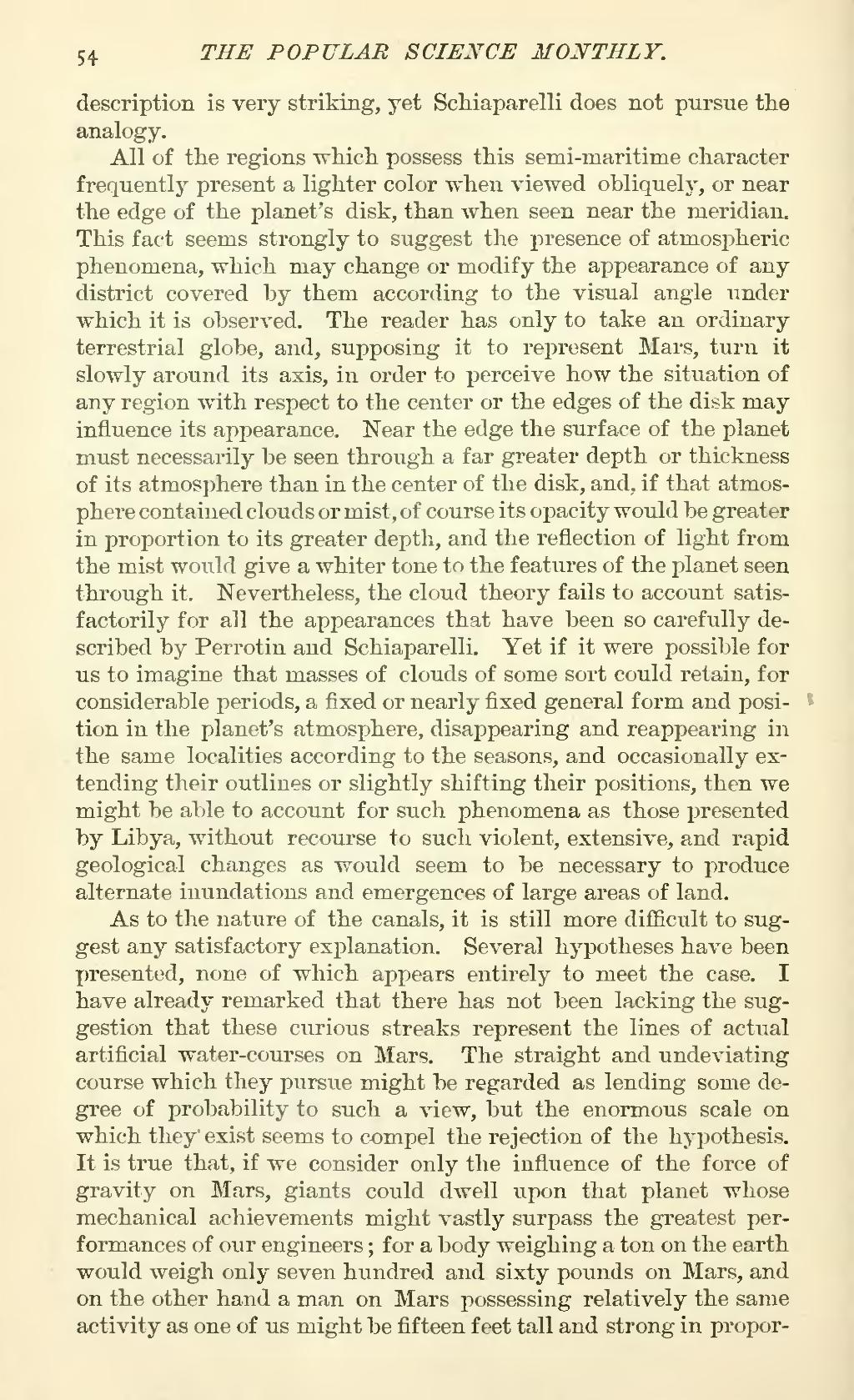description is very striking, yet Schiaparelli does not pursue the analogy.
All of the regions which possess this semi-maritime character frequently present a lighter color when viewed obliquely, or near the edge of the planet's disk, than when seen near the meridian. This fact seems strongly to suggest the presence of atmospheric phenomena, which may change or modify the appearance of any district covered by them according to the visual angle under which it is observed. The reader has only to take an ordinary terrestrial globe, and, supposing it to represent Mars, turn it slowly around its axis, in order to perceive how the situation of any region with respect to the center or the edges of the disk may influence its appearance. Near the edge the surface of the planet must necessarily be seen through a far greater depth or thickness of its atmosphere than in the center of the disk, and, if that atmosphere contained clouds or mist, of course its opacity would be greater in proportion to its greater depth, and the reflection of light from the mist would give a whiter tone to the features of the planet seen through it. Nevertheless, the cloud theory fails to account satisfactorily for all the appearances that have been so carefully described by Perrotin and Schiaparelli. Yet if it were possible for us to imagine that masses of clouds of some sort could retain, for considerable periods, a fixed or nearly fixed general form and position in the planet's atmosphere, disappearing and reappearing in the same localities according to the seasons, and occasionally extending their outlines or slightly shifting their positions, then we might be able to account for such phenomena as those presented by Libya, without recourse to such violent, extensive, and rapid geological changes as would seem to be necessary to produce alternate inundations and emergences of large areas of land.
As to the nature of the canals, it is still more difficult to suggest any satisfactory explanation. Several hypotheses have been presented, none of which appears entirely to meet the case. I have already remarked that there has not been lacking the suggestion that these curious streaks represent the lines of actual artificial water-courses on Mars. The straight and undeviating course which they pursue might be regarded as lending some degree of probability to such a view, but the enormous scale on which they exist seems to compel the rejection of the hypothesis. It is true that, if we consider only the influence of the force of gravity on Mars, giants could dwell upon that planet whose mechanical achievements might vastly surpass the greatest performances of our engineers; for a body weighing a ton on the earth would weigh only seven hundred and sixty pounds on Mars, and on the other hand a man on Mars possessing relatively the same activity as one of us might be fifteen feet tall and strong in propor-
